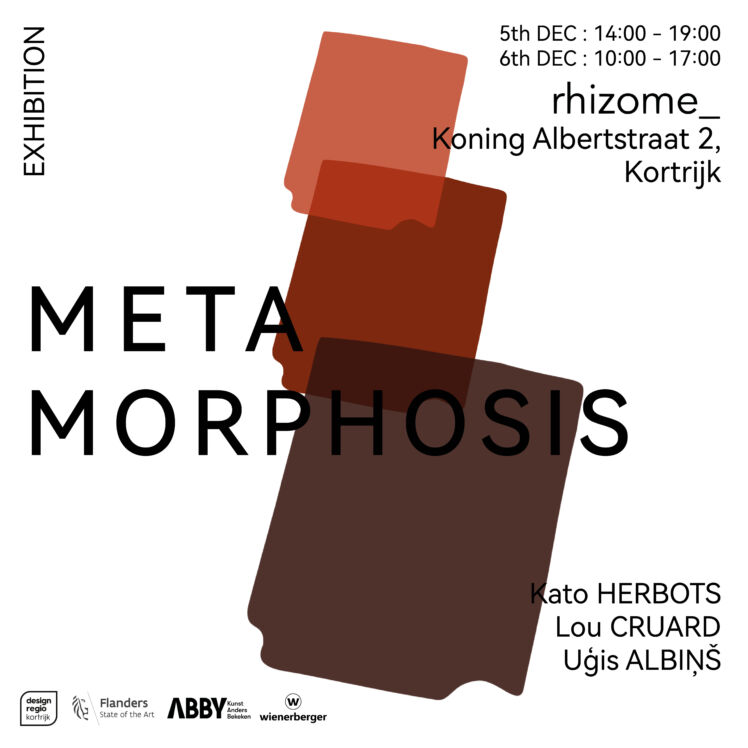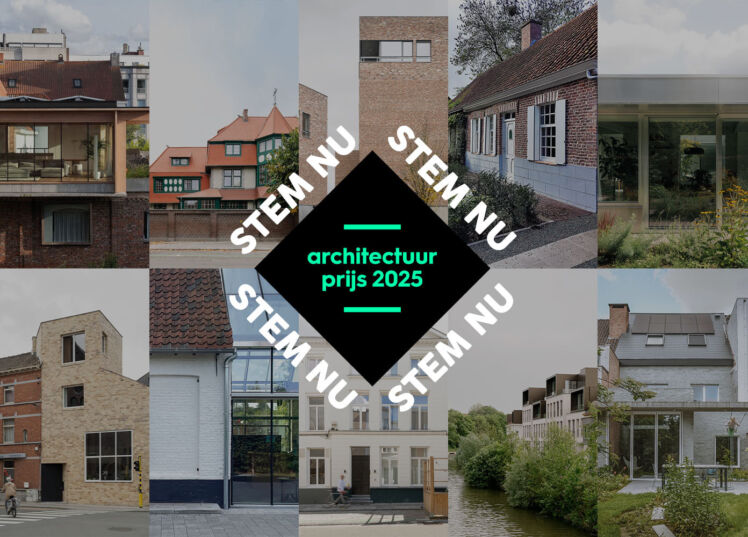
On the practice of SIMON HAMPIKIAN, YARA VELOSO and NICOLAS ZANONI
Designers in Residence Kortrijk 2023
In 2023, DESIGNEGIO Kortrijk and ELDERS collectively joined forces and hosted Yara Veloso, Simon Hampikian and Nicolas Zanoni for an inspiring residency program. We asked Evelyn Simons, curator, writer and creative consultant, to talk to them. We are happy to share her artist statements.
On the practice of SIMON HAMPIKIAN

Simon Hampikian (b. 1998, Bordeaux) works on the crossroads between art and design, allowing his practice to be guided by physical or observatory finds from the urban landscape.
Coming from a family of farmers where manual and hands-on skills were a common denominator (his father even being a wooden boat constructor); assembling, repairing and building were selfevident habits he grew up with. He went on to study product design, strengthening his relationship to physical matter and the act of creating. Subsequently moving to Fine Arts (Haute Ecole des Arts du Rhin), Hampikian settled freely into his current practice, where hybridity and the sampling of both aesthetic and pragmatic typologies gesticulate his intriguing objects.
The streets are omnipresent in his designs, which often incorporate recuperated material and found objects which he playfully repurposes. These stumbled-upon finds are symptomatic of our industrialised and consumer-obsessed society: mass-produced utensils, non-degradable waste, the debris of our contemporary lives - and yet, Hampikian seeks to highlight their allure. Boasting sun- faded surfaces and patina’s commemorating their previous use or neglect, they imbue life and poetry into the final works, such as is the case in MunLamp. This series originated in the encounter between discarded traffic sign poles, and slabs of leftover PVC from cooling cells. Or CMSeat, which consists of downgraded climbing ropes, tightly woven into chairs, their natural colours defining the works’ palette. Inherent to his practice is a sense of co-authorship, allowing for the material to define its own course during the creation process. A disobedience if you like, which he eagerly embraces. Coincidences or accidents perpetuated into memories.
He frequently returns to the street, not only to source materials, but also for inspiration. CuratingDailyLife is a database of images and snapshots collected since 2019: seemingly incoherent fragments of the built environment that are sometimes translated into corresponding designs, or sometimes just there to fascinate and to inspire an atmosphere. Overall, these photographs are an essential tool in the conception and creation methods of Hampikian, who is relentlessly fascinated by small phenomena of humble, human existence. His appetite for what’s ordinary is rhymed with his technical mindset, from which he derives logic and visual language, to create works which are often ambiguous about their function. DailyObjects is a collection of such examples: a stool, a table, and a box made from unexpected combinations of materials. They look fragile, and even though their names directly reference quotidian furniture, their appearance confuses this expectation. His most recent practice shifts the gaze from objects towards architecture. Intrigued by constructions which seem to hover in time, he recreates plastered brick walls and wooden fences, typical to the Belgian hinterland. He hints at gothic features, at gargoyles or feudal fencing, to develop shapes and forms which objectify and abstract these urban constructions. That which is public is domesticated into the private sphere, where it can exist as furniture or as an artistic presence. In an unorthodox play of contrasts between the contemporary and the historical, between efficiency and deliberate aesthetics, Hampikian constructs a distinct personal vocabulary.
On the practice of YARA VELOSO

Working with video, drawing and software, Portuguese-Brazilian Yara Veloso (b. 1993, Lisbon) looks into the (dis)comfort that arises when humanity and technology meet. Having studied Design at the KABK (Royal Academy Den Hague), followed by a Masters in Graphic Design at Werkplaats Typografie (Arnhem), her practice oscillates between making interactive webpages, conceiving visual identities, and creating immersive (and often participatory) installations or happenings.
For a species in constant development; technology has always provided us with tools to tighten our grip on the world, to make sense of the chaos. Embodying human intervention, its history goes hand-in-hand with the evolution of language: from clay line and finger marks on caves, to cuneiform tablets, up to the written, and even the printed word. Technological advancements of the 20th century have diverted this human evolution in a way, by splitting our world into two parallel and reciprocal entities: the physical and the digital. A fascination with how this exponentially alters our consciousness and our way of being in the world, is at the root of Veloso’s work. Occupied with language and its structuring of our perception, she explores how thought-processes are rewired through the fusion between mankind and computers.
Defying a moralistic stance, Veloso is rather intrigued by the awkwardness and clumsiness that sometimes occurs in this encounter. Like observing a first date where an attempted smooth kiss goes wrong, noses bumping into each other. Through humor, she casts a playful eye onto the constructed-ness of those systems that we all have come to take for granted. Systems we can no longer live without, systems we have internalised to the point that they are integral to our functioning. What logic has motivated these inventions? From a sober distance, and especially when in use by large groups of people simultaneously, these “solutions” of human engineering look rather absurd. Human evolution, high on a spiked cocktail of steroids. Perhaps the advancement is going too fast?
The question of agency arises. What happened to the Future? (2019), in collaboration with Vera Van der Seyp looks at the archive of Poetry International through a new media lens. The project brings together crowdsourced words, an interactive and participatory chatbot poem (Life is Given to Us Humans) and a video showing the algorithm on the loose. For these new developments don’t halt our relentless urge to leave a trace of ourselves into this world. On the contrary, this urge gets even more frantic now that our imprints are both digital and physical. asdfghjkl (2023, ongoing) is a growing database collecting these reminders of human existence, probing the question of “who’s directing who” in this continuous, and seemingly ephemeral amalgam of content creation. Frue/Talse Portal and Ynoes (2023) make these traces physical again. These large steel panels doodle-like drawings of our physical receptors - eyes, hands and ears - in bright colours, obstructing and rearranging our viewing of reality - in this case, the exhibition.
Veloso considers technological add-ons as new extensions of our senses. They envelop and slowly suffocate us in a tightly wrapped filter. Being the new architecture of our society, they don’t only run parallel to the physical world, but are exceedingly intertwined with it. Weird-looking ergonomic inventions are another recurring motif in Veloso’s work, often blown up into grotesque proportions. A phone on our arm recording our heartbeat and itinerary whilst running, is turned into a bulky iPad strapped to the pillars of a building in Hug (2021). The ideal positioning for hands on a keyboard deviates into new iconography in The Way Things are Going (2022), referring to John Ruskins’ statement that whilst drawing, a line should always have a destination. And so asks the artist, what direction are we going? From a distance and isolated from their everyday use, these inventions and rules look so random. Qwerty or Azerty? It’s all very confusing.
On the practice of NICOLAS ZANONI

Nicolas Zanoni (b. 1985, Paris) is a French designer of Argentinian origin whose works defy traditional expectations of contemporary design. Irregular, unique, handmade and often resulting from accidental encounters with his materials, Zanoni produces functional objets that take the shape of sculptures and vice versa.
After obtaining a Masters in Industrial Design at La Cambre (BE), Zanoni dedicated himself fully to the nonconformist attitude of experiment and instinctive manipulations of materials, which he had developed during his education. Rather than pursuing practicality, he is in search of poetry, expressing his own playful perspective on the manufactured objects we surround ourselves with. Working with industrially produced materials such as Polystyrene or aluminium, Zanoni sets out to explore the limits of physical manipulation. Aluminium thread is woven into various patterns, flattened out or melted to reveal various textures. Polystyrene is stacked, heated and burnt to solidify and change colour. These processes, which are often intuitive and almost analogue, erupt in shapes and volumes that appear organic and natural. Whilst his working methods are repetitive, time-consuming and labour-intensive (releasing the artists’ own flows of energy) they are not fully deliberate. Improvisation and free-styling are key. Zanoni welcomes accident and surprise in his creative approach, allowing for unexpected ways in which the materials’ own properties and inner logic can contribute to the visual outcome.
Series such as Climbing (which feature climbing grips) and Spinner (with rollerblade rollers) hint at memories from his own childhood. These pieces, whose intricate aluminium or inox shapes beautifully clash with the seeming banality of elements derived from sports, point out how decontextualisation is inherent to his practice. Details and fragments - from the built environment or from personal recollections - are isolated and reintegrated, making way for designs that are both anachronistic, playful and slightly camp. Another approach is that his designs arise from manipulating a single material and applying what he calls "trickery": seemingly simple processes that "hijack" the working process and define the coming together of matter and form. The Crater for example boasts volcanic appearances which are the mere result of burning the material: white Polystyrene bubbles up and changes colour to a marbling effect. Then again, Coat Hanger originates out of the screwing together of two aluminium bars, with folds emerging from the joints. As a recurring method, woven (and sometimes pressed) aluminium establishes itself as Zanoni’s handmark. Often combined with cast aluminium for solidity, this luxurious soft armour makes up chairs, lamps, side tables and shelves. Shimmering in the light, they generously tickle their users’ tactile curiosity.
As close as is the encounter between the designers’ own hands and the material he deploys, as personal also becomes thus the meeting between the object and its audience. Zanoni creates with domestic contexts in mind. Even though his designs could be perceived as sculptures, it’s their inherent functionality and peculiar materiality that facilitates physical contact and a relationship with its user. There is a certain intimacy of bringing the crystallisation of his own endurance into people’s households. And it’s exactly this directness that underpins both his approach, as what he’s set out to do: fostering one-of-a kind connections between people and objects.
Nicolas Zanoni lives and works in Brussels (BE).











